Drones to be used by stores in America. Well, maybe
- Published
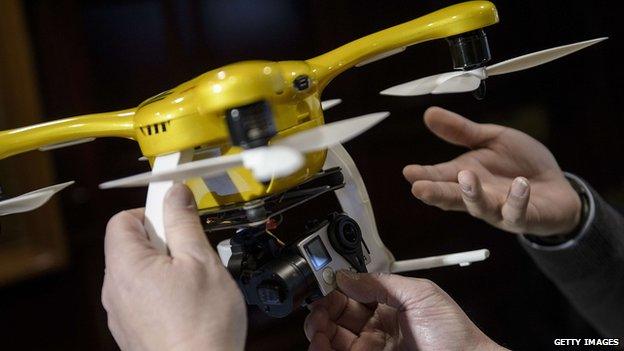
From filming blockbusters to checking the condition of grapes, drones used to be the stuff of sci-fi and geeky tech blogs, but not any more.
New rules proposed by America's Federal Aviation Administration (FAA) could make small unmanned commercial aircraft under 55lb (25kg), even more common.
These small drone flights still won't be permitted at night, though, near an airport or over large groups of people.
Here's what you need to know about the planned relaxing of the rules.
When will drones be filling up the air?
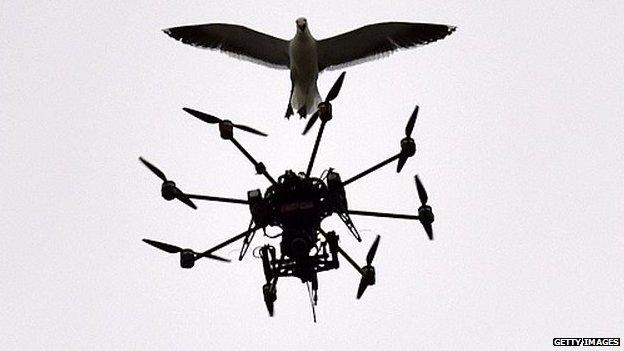
There's been a long wait for these rules for companies looking to use drones.
At the moment there is pretty much a full ban on flying drones for commercial purposes.
But they'll still have to wait a bit longer.
Before becoming finalised, the rules must go through a comment period, during which the public can have their say on the proposals.
Who will be allowed to fly a drone under the new rules?

Night-time flights will be a no go
Anyone over the age of 17 who has passed an aeronautical knowledge test (which will have to be renewed every two years), holds an FAA UAS operator certificate and passes a Transportation Security Administration background check.
Operators must also make sure their aircraft is safe for flight, but there are will be no official certification requirements.
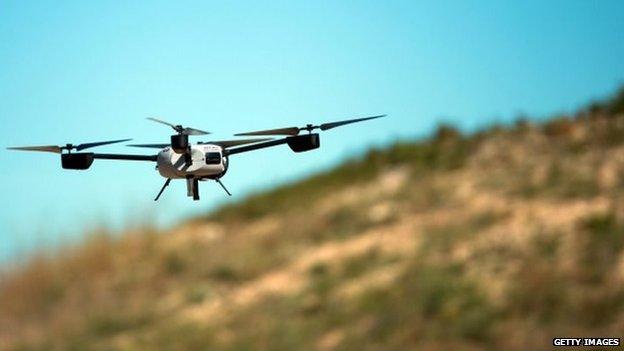
A preflight inspection by the operator, checking communications links and equipment will be enough.
The small drones would be allowed to travel as fast as 100 mph, at altitudes of 500ft (150m) or lower. Flights over crowds would also be banned.
Oh, and the new rules will not apply to model aircraft.
Does this mean airborne paparazzi?

This paparazzi-controlled drone was seen picturing Beyonce on a rollercoaster while filming a music video
Probably not. The new rules are accompanied by a set of drone privacy rules that lay out measures federal agencies must follow to guard against the abuse of data collected in drone flights.
Among other steps, the order requires agencies to reviewing privacy and civil rights before deploying drones.
Personally identifiable information collected in drone flights is to be kept no longer than 180 days.
So will I be getting deliveries via drone now?
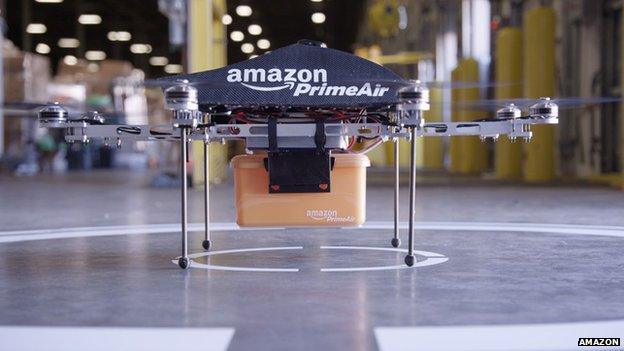
In 2013, Amazon said it was ready to start commercial drone deliveries as soon as regulations were in place
Unless you live within sight of a depot then no.
The proposals are pretty big blow to companies like Amazon that were hoping to use the unmanned aircraft to make aerial home deliveries.
Looks like you'll still be waiting between the hours of 8am and 6pm for you replacement phone charger.
What could go wrong? (a lot)
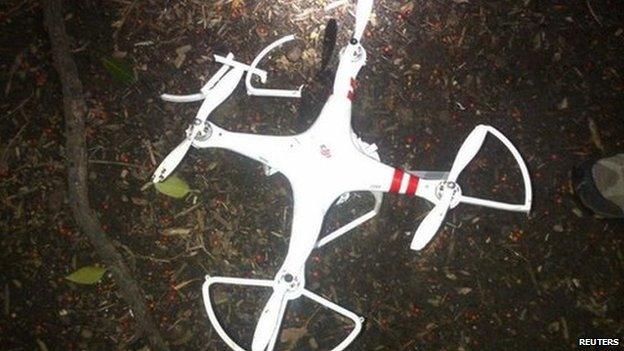
The Secret Service found a DJI Phantom drone on the White House's south lawn in January
One of the key safety concerns is that without a human on board the ability to see and avoid other aircraft is limited.
Another concern is that the link between the operator and a remote control aircraft can be broken, causing the drone to fly away until it loses power or collides with something.
Cases of fly-away drones getting stuck in trees or hitting buildings are already pretty common.
Who will benefit then?
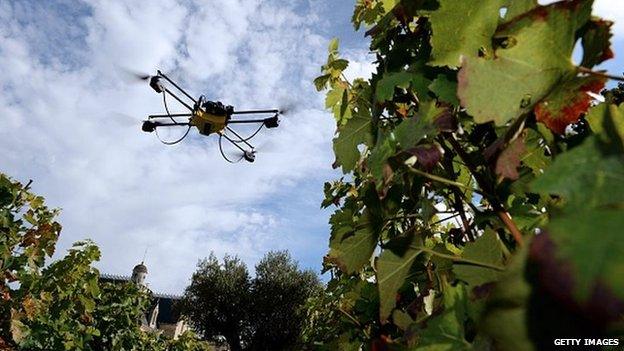
An FAA analysis points to an estimate by the trade association that drones will create 70,000 jobs with an economic impact of more than $13.6 bn (£8.8bn) in the first three years after their integration into US skies.
And when they are in place, they may include a separate category with fewer restrictions for very small drones.
"We have tried to be flexible in writing these rules," said FAA Administrator Michael Huerta.
"We want to maintain today's outstanding level of aviation safety without placing an undue regulatory burden on an emerging industry."
The agency is researching technology that he hopes will eventually enable small drones to fly safely beyond the sight of operators, Huerta said.
He emphasised that introduction of commercial drones into the national airspace will be a staged process.
The US government is also looking ahead to how larger drones might be allowed to fly in airspace shared by manned aircraft.
What about the UK?
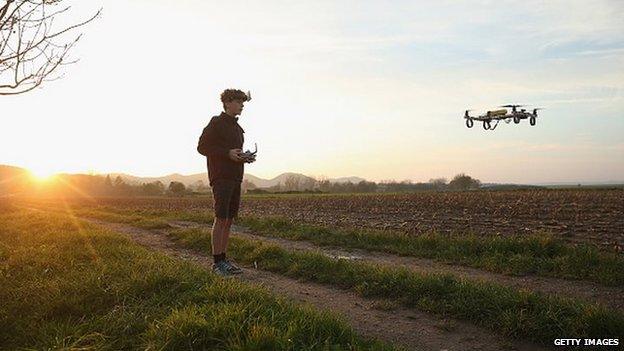
Small drone flights in the UK have to be given the green light by the Civil Aviation Authority (CAA). That's been the case for the last five years, as drone technology has gone increasingly mainstream.
Operators of small unmanned aircraft must get permission from the CAA before a flight close to people or property.
Getting hold of that paperwork takes time and once you've got it the likelihood is you'll be taking your drone to a very large field in the middle of nowhere. And that's nowhere near your favourite singer's back garden.
Follow @BBCNewsbeat, external on Twitter, BBCNewsbeat, external on Instagram and Radio1Newsbeat, external on YouTube